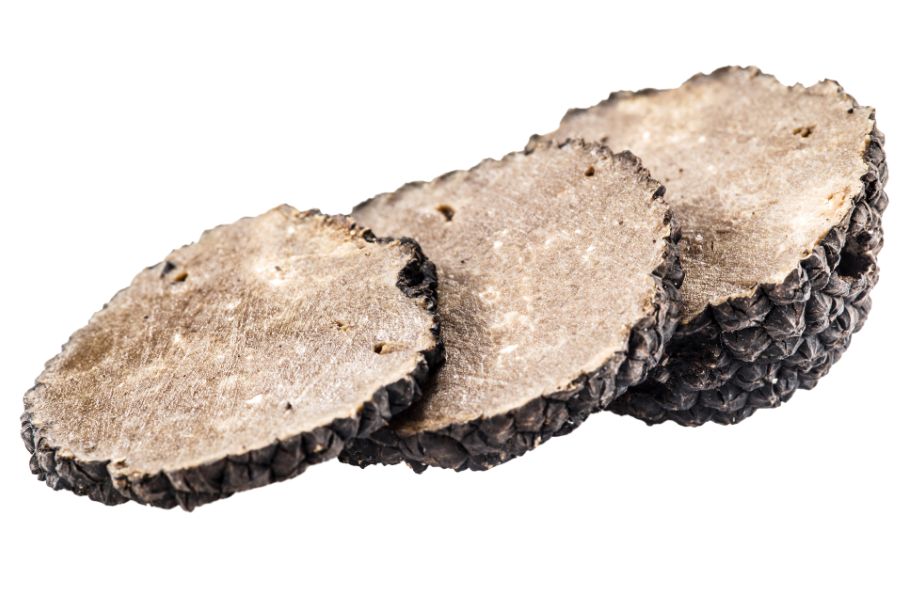Hunting for wild truffles in Arkansas means searching beneath the forest floor, not scanning tree trunks and leaf litter. It takes patience, sharp eyes, and a sense of where the real treasures are hiding underground.
The state’s rolling hills, pine-covered uplands, and loamy bottomlands all offer quiet pockets where truffles can grow. These fungi thrive where the soil stays just moist enough and certain hardwoods dominate the canopy.
Even seasoned mushroom hunters can walk away empty-handed, but the moment you uncover one truffle, everything shifts. And if you know where to look, it’s possible to bring home a basket that surprises even the most experienced forager.
What We Cover In This Article:
- What Wild Truffles Look Like
- Truffle Lookalikes To Avoid
- Best Practices For Finding Truffles
- Where You Can Find Truffles Around The State
- Other Great Locations For Truffles
- When The Best Time Of The Year Is To Find Truffles
- The extensive local experience and understanding of our team
- Input from multiple local foragers and foraging groups
- The accessibility of the various locations
- Safety and potential hazards when collecting
- Private and public locations
- A desire to include locations for both experienced foragers and those who are just starting out
Using these weights we think we’ve put together the best list out there for just about any forager to be successful!
A Quick Reminder
Before we get into the specifics about where and how to find these plants and mushrooms, we want to be clear that before ingesting any wild plant or mushroom, it should be identified with 100% certainty as edible by someone qualified and experienced in mushroom and plant identification, such as a professional mycologist or an expert forager. Misidentification can lead to serious illness or death.
All plants and mushrooms have the potential to cause severe adverse reactions in certain individuals, even death. If you are consuming wild foragables, it is crucial to cook them thoroughly and properly and only eat a small portion to test for personal tolerance. Some people may have allergies or sensitivities to specific mushrooms and plants, even if they are considered safe for others.
The information provided in this article is for general informational and educational purposes only. Foraging involves inherent risks.
What Wild Truffles Look Like
The U.S. is home to several native truffle species that grow wild in forests across the country. Each one has its own unique scent, appearance, and preferred habitat. Here are the types of truffles you can find:
Oregon Black Truffles (Leucangium carthusianum)
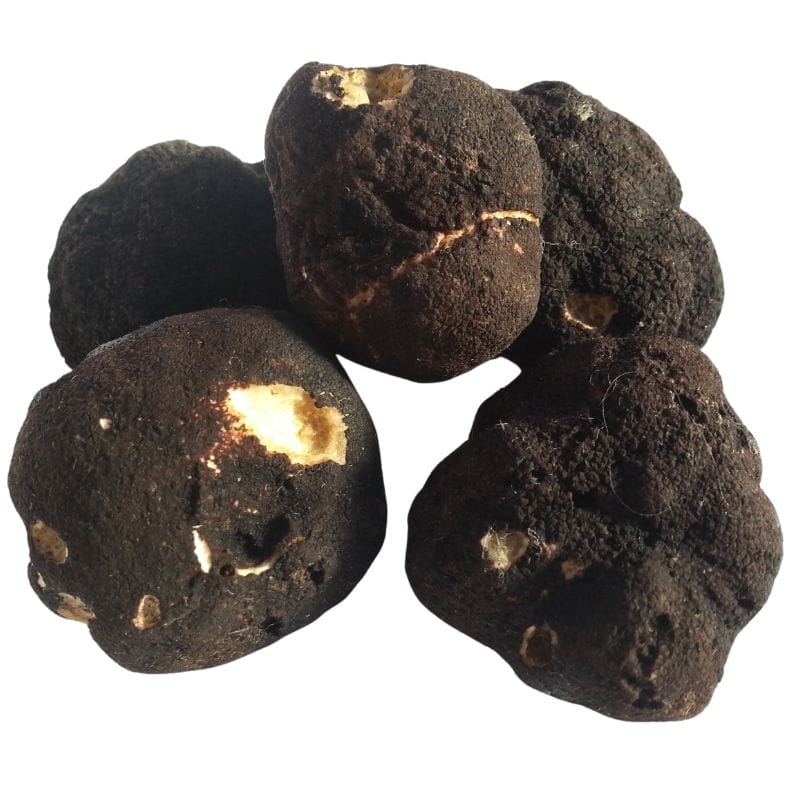
Leucangium carthusianum, also called the Oregon black truffle, grows in the Pacific Northwest and usually shows up around Douglas-fir trees. It’s a native species and one of the more well-known edible truffles from the region.
On the outside, it looks like a small lump of coal—dark black, kind of lumpy or warty, and sometimes slightly smoother in spots. They’re usually about the size of a golf ball, but they can be smaller or larger depending on the season.
Inside, the truffle is firm with a marbled pattern of gray and white veins running through it. When it’s fresh, it smells fruity, almost like pineapple, but the scent gets stronger and muskier as it ripens.
If you’re out looking for them, check in moist, shady forests with soft, loamy soil, especially where there’s a lot of moss or ferns. They grow just below the surface, so people often use trained dogs to help sniff out the ripe ones.
Compared to the Oregon white truffle, which is lighter in color and has a sharper, garlicky aroma, the black truffle has a deeper, more earthy smell. It’s also bigger and firmer than the southern U.S. truffles like Tuber lyonii, which tend to be smaller, paler, and grow around hardwoods like oaks and hickories.
Oregon Winter White Truffles (Tuber oregonense and Tuber gibbosum)
Oregon has two native white truffles that are starting to get more attention: the Oregon Winter White Truffle (Tuber oregonense) and the Oregon Spring White Truffle (Tuber gibbosum). They grow underground in forests and are prized for their strong, savory aroma.
From the outside, these truffles are small, roundish, and kind of bumpy, usually pale beige to light brown. Cut one open, and you’ll see a white interior that darkens with age, showing off a web of white veins when it’s fully mature.
The Winter White Truffle pops up from late fall into February, while the Spring White starts showing up around January and can last into June. They’re pretty similar, but the Winter variety is known for having a more powerful scent and flavor.
To find them, you’ll want to look in forests with younger Douglas-fir trees on the west side of the Cascades. Truffle hunters often check for loose soil or spots where animals have been scratching, which can be a sign there’s something below.
When fully ripe, both types give off a bold smell that’s often compared to garlic, cheese, or earthy spices. They’re usually served raw, shaved over dishes to add that truffle kick without losing any of the aroma.
Appalachian Truffle (Tuber canaliculatum)
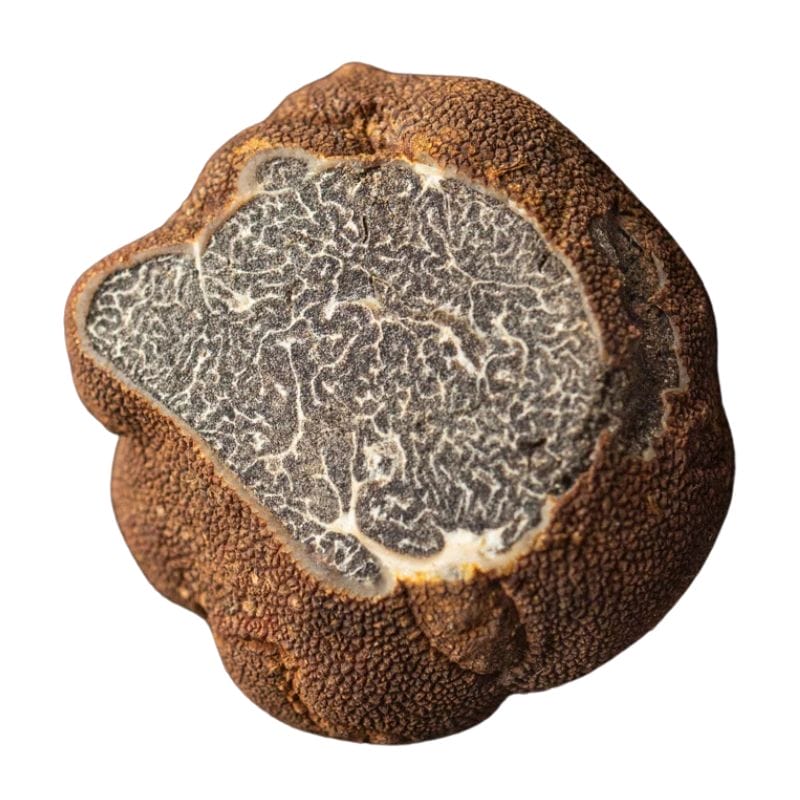
The Appalachian truffle, also known as Tuber canaliculatum, is a native North American truffle that’s slowly getting noticed. It’s about the size of a walnut and has a reddish-brown, bumpy outer surface that looks kind of like a rough, warty potato.
When you cut it open, the inside is firm and dark brown with thin white veins running through it like a marbled pattern. If it’s fully ripe, the smell is strong and earthy—some say it has a kind of nutty, funky aroma that stands out.
You can find these truffles in mixed hardwood forests, especially around oaks and pines, from late summer through fall. They grow underground, so look for spots where the soil is loose and animals like squirrels have been digging—sometimes that’s a good clue.
If you’re foraging, gently raking the top layer of soil near tree roots can help, but a trained dog or even a good nose makes it way easier. Once you know what to look for, the reddish color and bumpy skin are good signs you’ve found the right thing.
Compared to truffles like Tuber oregonense or Leucangium carthusianum, Tuber canaliculatum is more subtle in every way. Its smaller size and lighter scent mean you have to pay closer attention when foraging.
It’s also not as popular in the culinary world because it doesn’t pack the same punch in terms of flavor or aroma. Still, finding one can be rewarding, especially if you’re exploring different types of fungi in the area.
Desert Truffle (Terfezia and Tirmania spp.)
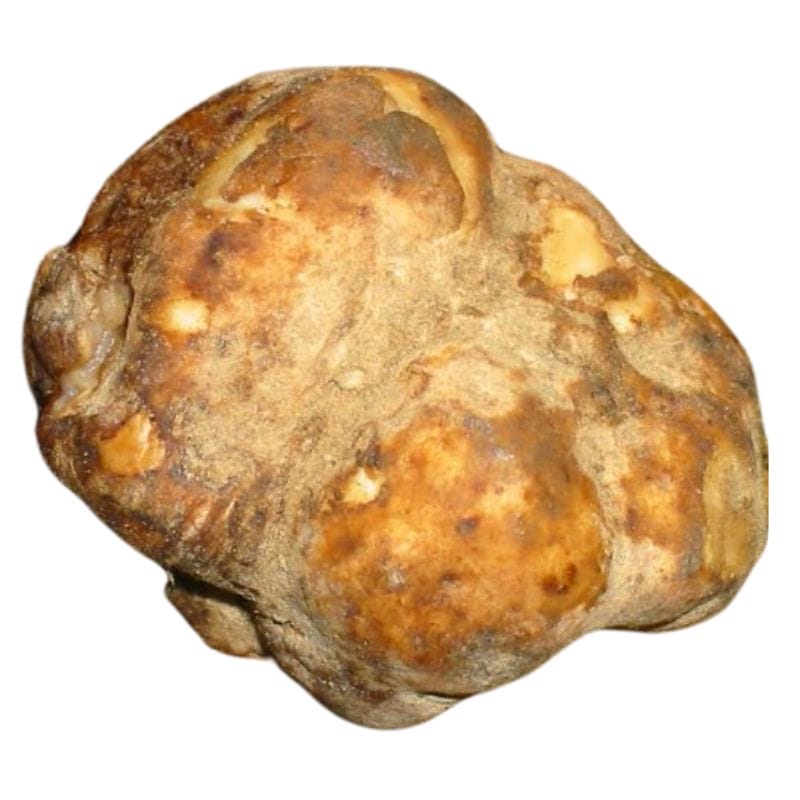
Terfezia and Tirmania are two types of truffles that are sometimes called desert truffles. These are a bit different from the truffles we usually think of, with their bold flavors and rich aromas.
These ones are a little more understated, but they’re fascinating in their own right. What makes them stand out is their ability to thrive in dry, harsh environments where you wouldn’t expect something so delicate to grow.
Unlike the earthy, intense aroma of black or white truffles, Terfezia and Tirmania truffles have a milder scent and flavor. They’re often described as nutty, with a hint of sweetness, but they lack the strong garlicky or musky notes you might associate with other truffles.
Their texture is also different—more firm and less oily than what you’d find with species like Tuber oregonense. They might not have the same culinary punch, but they’re still prized in traditional dishes, where their subtle flavors shine in simpler recipes.
When it comes to appearance, they’re easy to spot once you know what you’re looking for. They’re round to slightly irregular in shape, and their color can range from light beige to a reddish-brown, depending on the species.
The surface is usually smooth or slightly textured, without the rough, knobby look of a black truffle. Cut one open, and you’ll see a pale interior that’s often uniform in color, lacking the intricate veining you’d see in something like Leucangium carthusianum.
Pecan Truffle (Tuber lyonii)
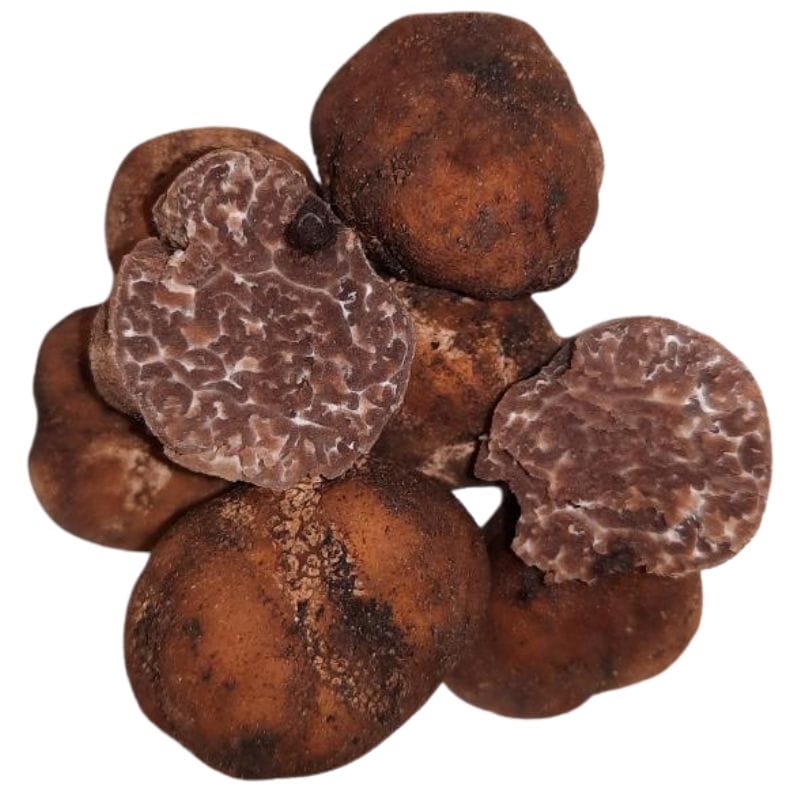
Tuber lyonii, also known as the pecan truffle, is a native North American truffle that grows underground near the roots of pecan trees. You’ll mostly find it in the southeastern U.S., especially in states like Texas, Georgia, and Mississippi.
On the outside, pecan truffles are round to lumpy and have a smooth, light brown skin that darkens as they age. They’re usually about the size of a marble or golf ball, and sometimes they even poke up slightly through the soil surface.
If you slice one open, the inside has a pretty marbled look—light tan streaks mixed with darker brown, almost like wood grain. The smell is earthy, nutty, and kind of warm, especially when they’re fully mature.
When you’re out looking for them, check under mature pecan trees or other hardwoods like oaks and hickories. Trained dogs can help sniff them out, but people sometimes spot them by looking for little cracks in the soil or raised areas near the tree’s base.
Compared to other U.S. truffles like the Oregon white truffle or the Appalachian black truffle, pecan truffles have a milder flavor and are more common in orchards. They’re a solid option in the kitchen—freshly sliced over pasta or mixed into butter—and they don’t come with the high price tag of their European cousins.
Truffle Lookalikes To Avoid
When you’re out hunting you also need to know about a few different fungi species that look very similar to the delicious truffles we’re after but are either inedible or not worth eating. Keep an eye out for:
Pine Truffles (Geopora cooperi)

Geopora cooperi is a fungus that can easily confuse someone new to truffle hunting. It’s sometimes called the pine truffle because it grows underground like a true truffle and often pops up near certain trees.
At first glance, it might seem like you’ve hit the jackpot, but this one is a false truffle, not something you’d want to eat or sell.
The easiest way to tell Geopora cooperi apart from real truffles is by looking closely at its structure. While true truffles have a smooth or slightly knobby exterior and a marbled interior, Geopora cooperi has a rougher, more irregular outer surface.
When it matures, it sometimes splits open, revealing a cup-like shape, which true truffles never do. Inside, it’s less dense and doesn’t have the intricate veining that makes real truffles so unique.
Another big difference is the smell. True truffles have a strong, rich aroma that’s earthy, sweet, or garlicky, depending on the species. Geopora cooperi, on the other hand, has a much weaker scent, and it’s not as pleasant or distinctive.
If you’re relying on aroma to identify your find, this one will give itself away pretty quickly. So, while it might look similar at first, a closer inspection will show it’s not the culinary treasure you’re hoping for.
Stinking Slime Truffle (Melanogaster ambiguus)
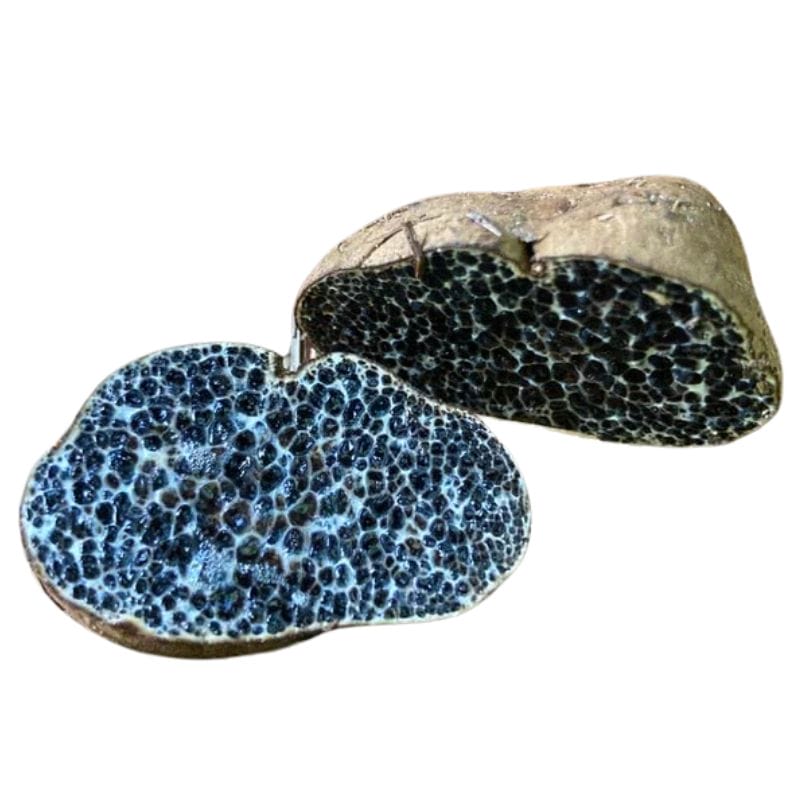
Melanogaster Ambiguus, because of their reddish-brown to dark brown exterior, might look like true truffles at first glance, but they’re quite different when you know what to look for.
The key difference is on the inside. When you cut open Melanogaster ambiguus, the interior is filled with flattened cells that have a shiny black gelatinous feel to them. Real truffles, on the other hand, have those beautiful marbled veins running through their flesh, almost like a web.
Another giveaway is the smell. While real truffles have a rich, earthy aroma that’s mouthwatering, Melanogaster ambiguus tends to have a much stronger, almost unpleasant odor—it’s not something you’d want to sprinkle on your pasta.
Earthballs (Scleroderma)
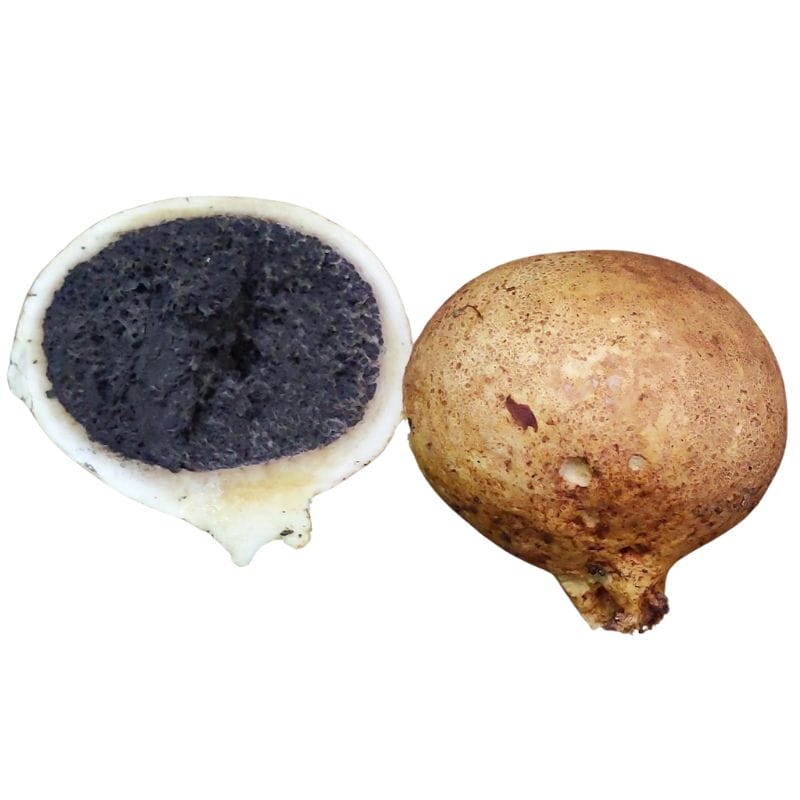
Scleroderma, commonly called earthballs, can easily fool someone who’s just starting out because they grow underground and have a round shape similar to truffles. But don’t be tricked—Scleroderma is not a true truffle, and it’s actually toxic, so it’s important to know how to tell the difference.
The first thing you’ll notice is the outer skin, which is thicker and tougher than that of most truffles. It can range in color from yellowish to dark brown, often with a rough or cracked texture.
If you cut it open, the difference becomes even clearer. While true truffles have a marbled interior with delicate white veins, Scleroderma starts out with a whitish inside that quickly darkens as it matures, turning black or purple with no marbling. It’s dense and solid, almost like charcoal in the later stages.
Another big giveaway is the smell. True truffles have a rich, earthy aroma that makes them so prized, while Scleroderma has little to no pleasant scent—some even describe it as musty or unpleasant.
Deer Truffles (Elaphomyces)
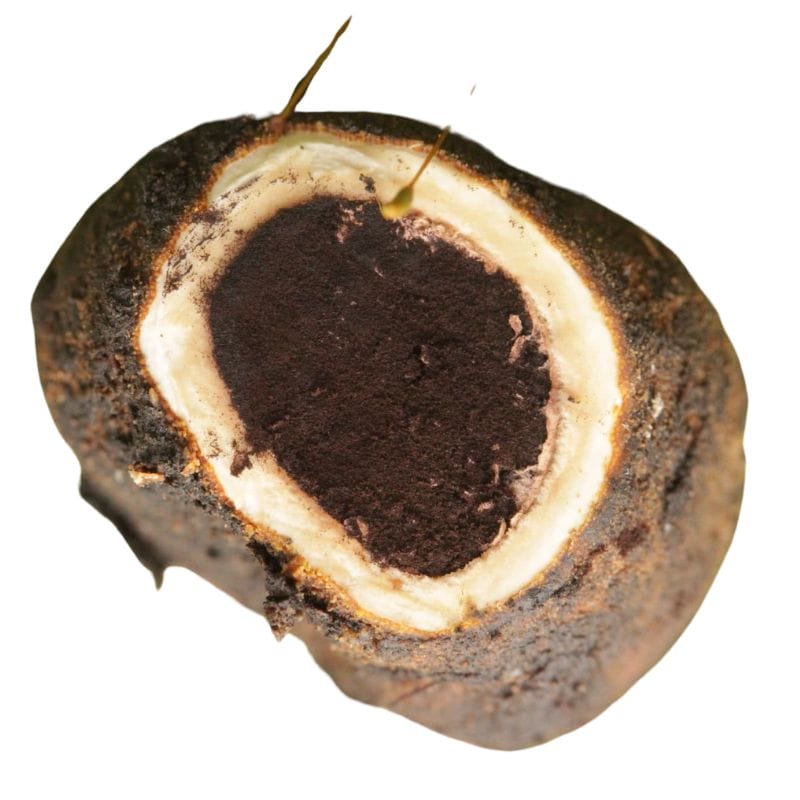
Elaphomyces, also known as deer truffles, look like true truffles at first glance, but they’re a whole different story. They’re called deer truffles because wildlife, especially deer and rodents, love to eat them. For us humans, though, they’re not edible—and definitely not what you want to mistake for a prized truffle.
Here’s how you can tell Elaphomyces apart from the real thing. First, they have a tough, warty outer surface that can range from pale tan to black, depending on the species and their age.
When you cut them open, the inside is solid and sometimes speckled or marbled, but not in the delicate, vein-like pattern you’d see in true truffles.
Their smell is also a big giveaway. Instead of the rich, earthy aroma of an edible truffle, Elaphomyces either has little scent or an odor that’s earthy but not particularly appealing.
Another thing to know is that Elaphomyces often grows deeper in the soil than true truffles, and they tend to have a harder, woodier texture.
Best Practices For Finding Truffles
Truffle hunting can be a rewarding adventure if you know the right tips and tricks. Here’s what you should keep in mind to improve your chances of finding these underground treasures:
Wait 10 to 14 Days After Heavy Rain
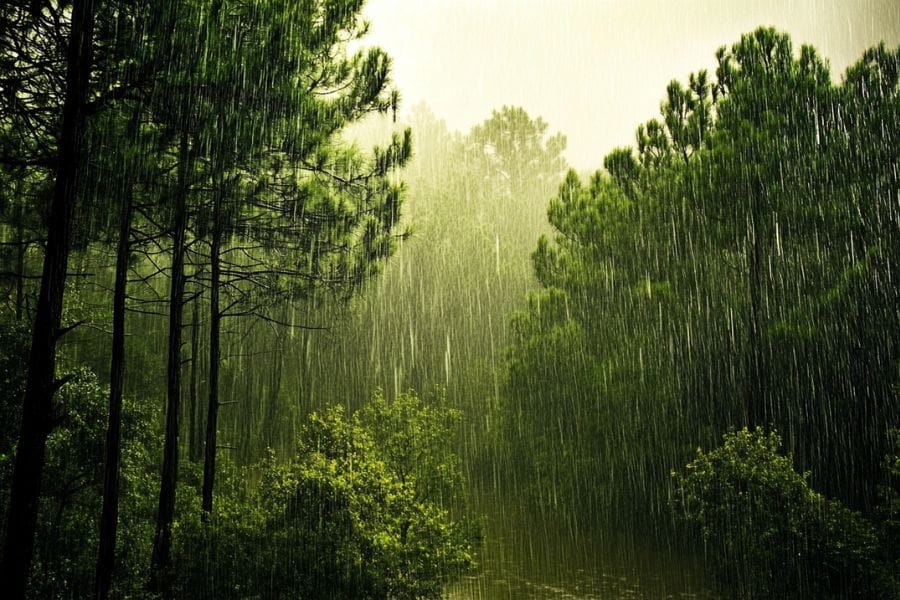
After a heavy rain, it’s best to wait about 10 to 14 days before heading out. This gives the truffles time to mature and release their signature aroma, making it easier for you (and your dog) to sniff them out. Rain helps truffles grow, but they don’t start giving off their scent right away.
As the soil warms up, the truffles get more aromatic, and the ground becomes looser, which makes digging easier without disturbing the environment too much. The timing is perfect to find truffles at their best—both in quality and in how easy they are to locate.
Find the Right Trees
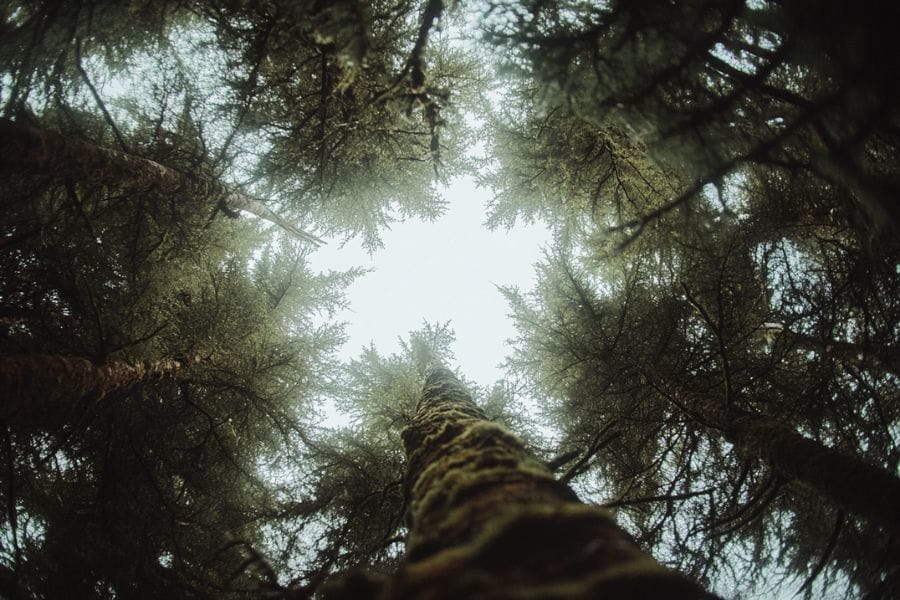
Truffles don’t grow just anywhere—they have a special relationship with certain trees. You won’t find them under just any tree, so knowing which ones to look for can make all the difference. Some of the best trees to look out for are:
- Pines
- Douglas-firs
- Oaks
- Hazelnuts
- Cypresses
- Willows
For example, if you’re looking for Oregon white truffles, keep an eye out for Douglas-fir trees. California black truffles, on the other hand, are often found near oaks and hazelnuts. The soil around these trees also needs to be slightly alkaline, so it helps to know what kind of ground you’re walking on as well.
Watch for Wildlife Activity
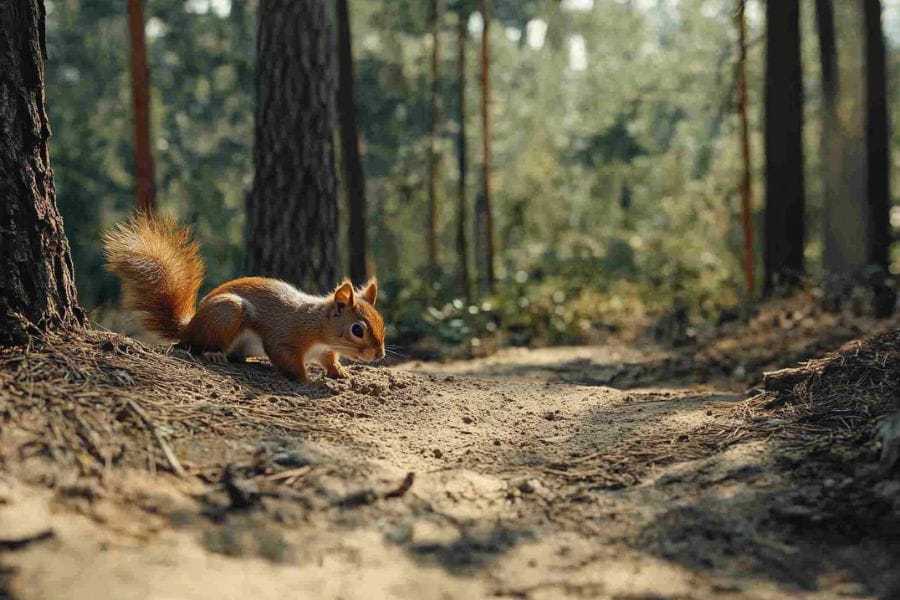
Animals like squirrels and chipmunks often help spread truffle spores, and sometimes their digging can lead you straight to truffles. While you won’t always find truffles in every pit animals dig (they also look for things like acorns or bulbs), fresh digs are a good clue. The more recent the pit, the better chance it has of leading to truffles.
Even though animals are a part of the truffle cycle, most hunters prefer using dogs to find the real treasure underground. Dogs have an incredible nose for truffles and can pinpoint their location much more reliably than any squirrel or chipmunk.
Get a Little Help from a Truffle-Hunting Dog
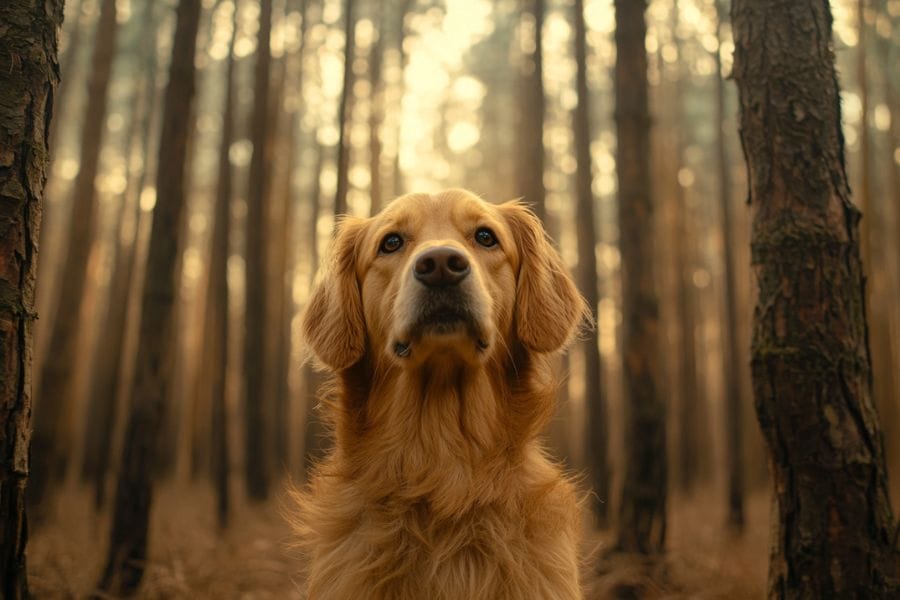
If you’re serious about truffle hunting, a trained dog can make your life a whole lot easier. Their sense of smell is extraordinary, and they’re trained to find mature truffles buried beneath the surface. Many truffle hunters swear by their dogs, and for good reason—they’re much more accurate than humans when it comes to sniffing out truffles.
If you don’t already have a trained dog, you can connect with local foraging groups or specialized trainers who offer truffle-hunting services. Some places even host events where you can see experienced handlers with their dogs in action. And if you’re feeling adventurous, you can train your own dog using truffle-scent kits and practice in a controlled space before hitting the woods.
Before you head out
Before embarking on any foraging activities, it is essential to understand and follow local laws and guidelines. Always confirm that you have permission to access any land and obtain permission from landowners if you are foraging on private property. Trespassing or foraging without permission is illegal and disrespectful.
For public lands, familiarize yourself with the foraging regulations, as some areas may restrict or prohibit the collection of mushrooms or other wild foods. These regulations and laws are frequently changing so always verify them before heading out to hunt. What we have listed below may be out of date and inaccurate as a result.
Where You Can Find Truffles Around The State
Now we’re going to go over five of the best locations for finding truffles. We’ll go a bit in-depth here and then provide a much longer list of other spots to try.
Ozark National Forest
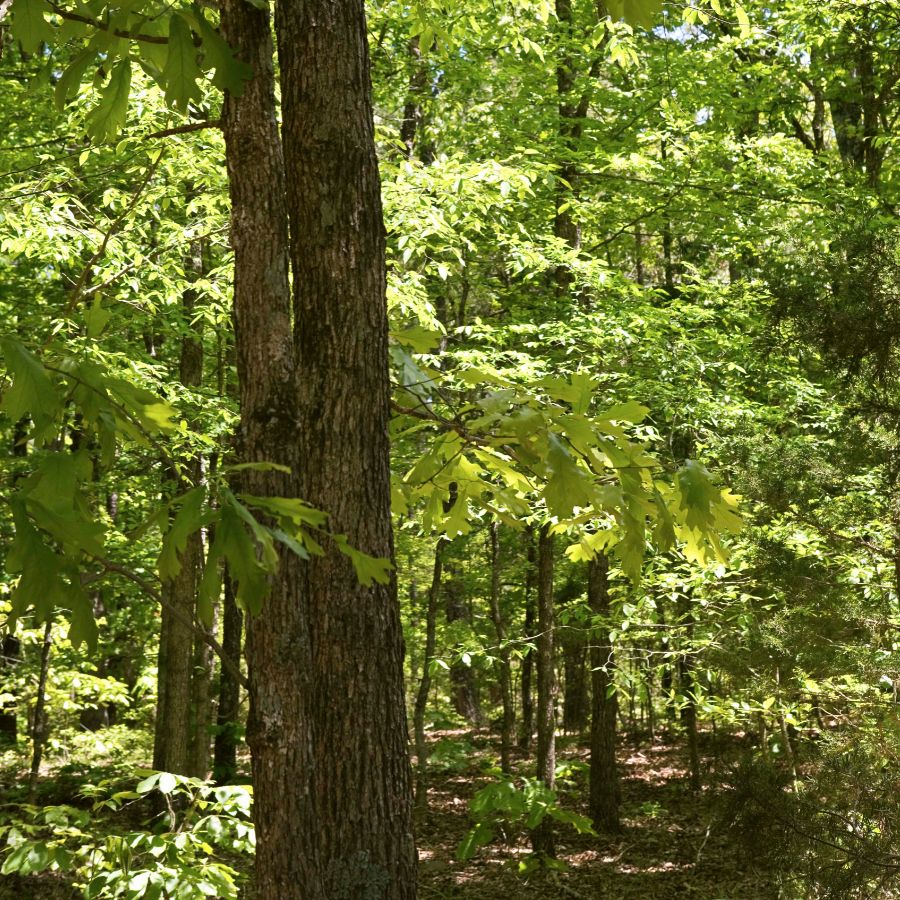
Ozark National Forest covers over one million acres in northwest Arkansas. It has lots of oak and hickory trees where truffles love to grow. The soil here is rich and full of nutrients that feed these tasty fungi. Look for truffles near old oak trees where people haven’t walked much.
Many people hike in Ozark but don’t know about the truffles hiding under their feet. Try looking in shady spots with damp soil, especially after it rains. The Buffalo River area is really good for finding truffles.
Look in the leaves around big old trees, not in open spaces. Different kinds of truffles grow here in spring and fall. Bring a small rake to move the top layer of dirt when you’re looking.
Mount Magazine State Park
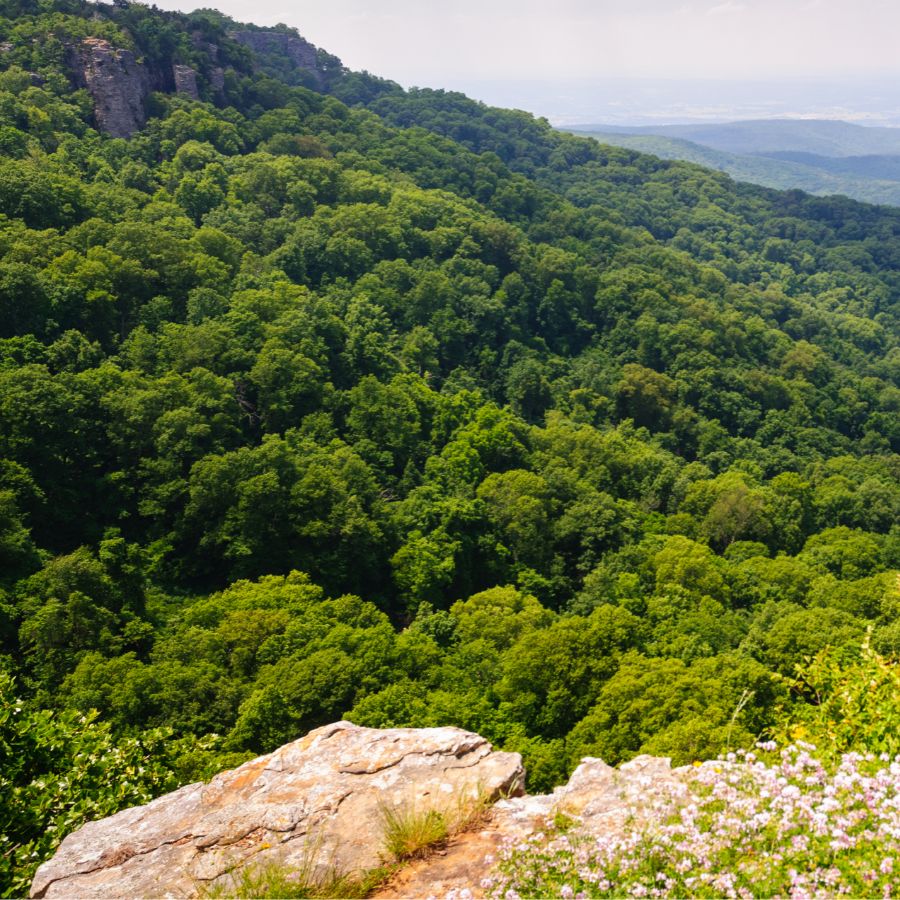
Mount Magazine State Park is the highest mountain in Arkansas. The cool mountain air creates special conditions for certain truffles. The park has thick forests with old beech and oak trees that help truffles grow.
The north sides of hills stay cooler and wetter, making them great for truffle hunting. Look in areas where there isn’t too much brush covering the ground. The soil here has special minerals that some truffles really like.
Park rangers sometimes know where truffles have been found before. Check around fallen logs and in places that drain well but stay a bit wet. The Signal Hill Trail has several good spots where the forest is just right for truffles.
Ouachita National Forest
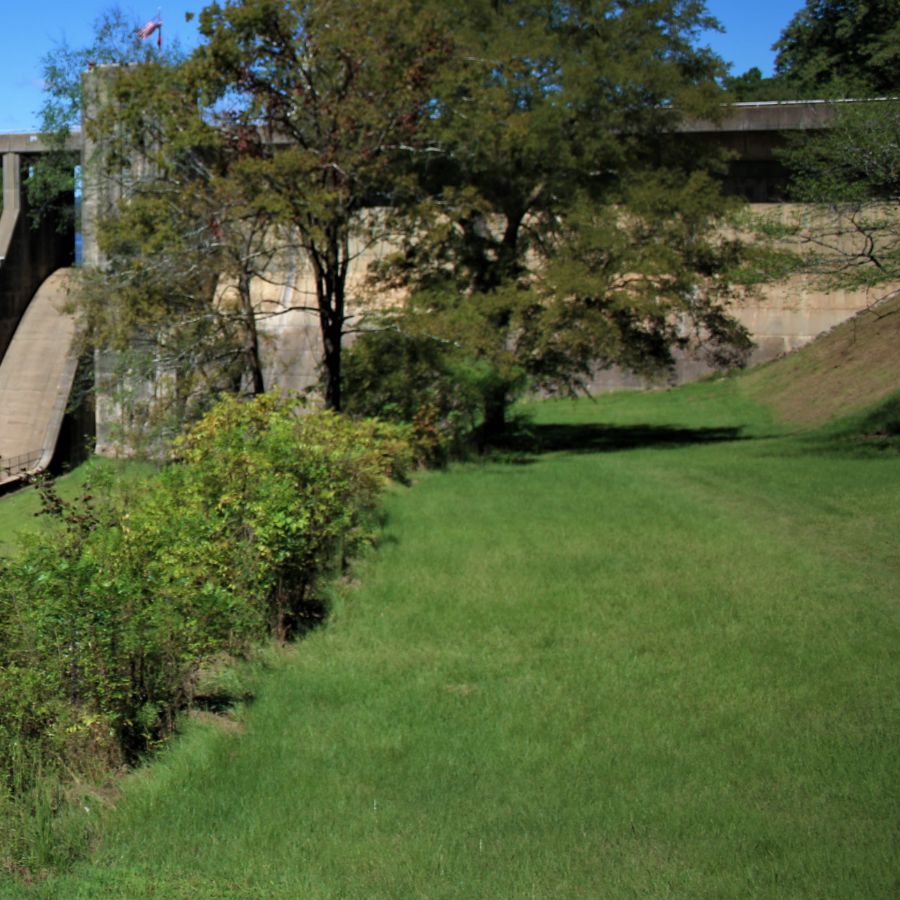
Ouachita National Forest is huge, covering 1.8 million acres across Arkansas and Oklahoma. Its mountains run east to west, creating unique weather patterns that truffles love. The mix of trees here supports many different truffle types.
Look where hardwood forests meet pine forests. These in-between areas often have lots of truffles. The forest has different heights and soil types, creating many places for truffles to grow.
Not many people go to the remote parts of this forest, so truffles can grow without being disturbed. Try looking near small creeks that don’t flood but keep the soil moist. The Arkansas side of the forest usually has more truffles than the Oklahoma side because of the soil.
Buffalo National River
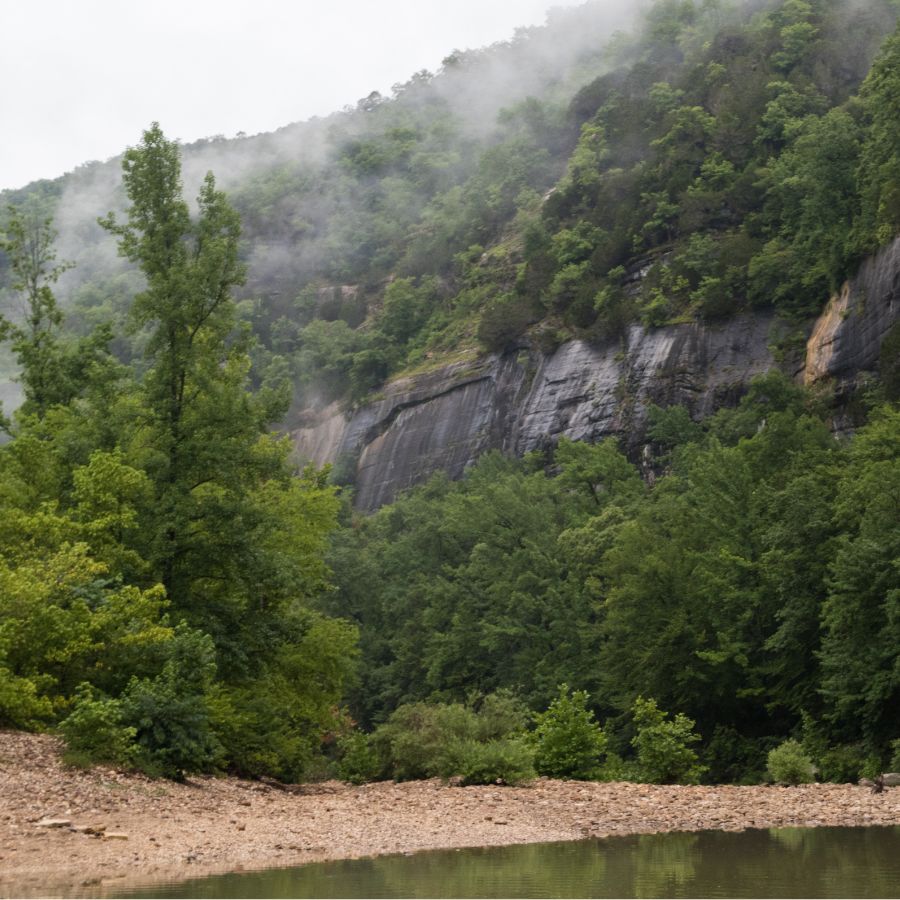
Buffalo National River has special riverside areas where truffles grow well. The river and nearby forests create perfect mini-environments for truffles. Many parts of this protected area haven’t been touched much, so fungi networks are strong here.
The floodplain areas that stay above water have soil rich in plant matter. These spots often have lots of truffles. Try looking in the middle areas between the river bottoms and the tops of hills.
The mix of trees along the Buffalo creates many different homes for fungi. Look around mature oak, hickory, and beech trees, especially where there are plenty of fallen leaves.
Tyler Bend has good places to start looking for truffles where not many other people go.
White Rock Mountain Recreation Area
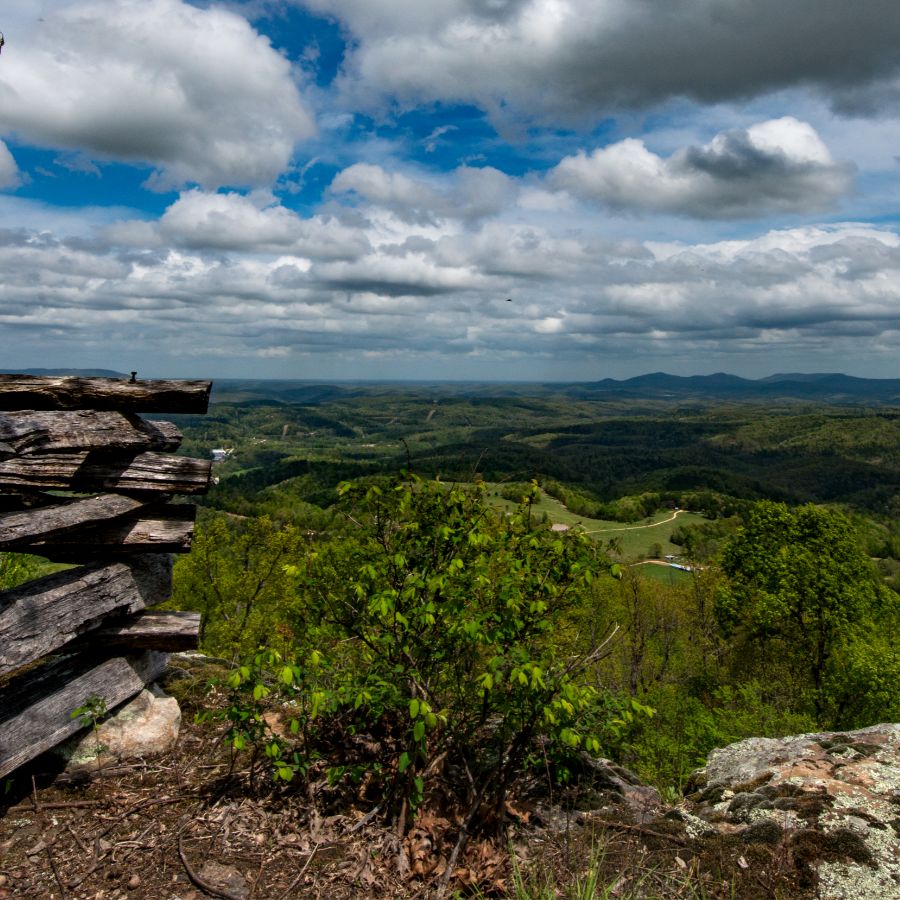
White Rock Mountain Recreation Area sits high in the Ozark National Forest. The weather is cooler here, and the soil helps certain truffles grow that are hard to find elsewhere.
The forest has many old sections that haven’t been cut down for many years. These untouched areas often have well-established networks of fungi, including truffles. North and east facing slopes are better for finding truffles because they don’t dry out as quickly.
Many people don’t know about this area for truffle hunting. Look in places with a good layer of fallen leaves but not too many bushes or small plants. The soil near where springs come out of the ground often has minerals that truffles need.
Bring a small hand rake and a bag with holes to let spores spread while you collect.
Other Great Locations For Truffles
Northwest Arkansas
| Location | Collection Guidelines |
|---|---|
| Beaver Lake WMA | Hand tools permitted; must follow AGFC WMA rules. |
| Buffalo National River WMA | Foraging allowed with a free personal-use permit; hand tools only. |
| Devil’s Eyebrow Natural Area | Light raking in designated zones; seasonal restrictions apply. |
| Hobbs State Park Conservation Area | Hand-tool foraging allowed in specific low-traffic areas. |
| Kings River Overlook Trail | Trail margins allow light, surface-level foraging with hand tools. |
| McIlroy Madison County WMA | Hand tools permitted in upland hardwood zones under WMA rules. |
| Mount Magazine WMA (NW area) | Foraging allowed on north-facing slopes with hand tools only. |
| Ozark–St. Francis National Forest | Mushroom permit needed for more than incidental use; hand tools only. |
| Wedington WMA | Upland forests allow hand raking; no mechanized equipment. |
| White Rock WMA | Creek flats and forest edges allow shallow hand digging for fungi. |
Northeast Arkansas
| Location | Collection Guidelines |
|---|---|
| Bayou Des Arc WMA | Upland hardwood margins permit personal-use foraging with hand tools. |
| Beryl Anthony Lower Ouachita WMA | Mature hardwood stands allow seasonal truffle foraging; hand tools only. |
| Cattail Marsh WMA | Upland ridges and oak flats allow hand raking only. |
| Dave Donaldson Black River WMA | River terraces permit personal-use hand foraging. |
| Ed Gordon Point Remove WMA | Foraging allowed in oak-hickory uplands; no commercial collection. |
| Lee Creek WMA | Riparian hardwood zones permit hand foraging. |
| Little Bayou WMA | Foraging allowed near bayou margins with non-invasive tools. |
| Little River WMA | Upland bottomland hardwoods allow shallow soil disturbance with rakes. |
| Norfork Lake WMA | Shoreline public zones allow hand tools for personal mushroom collection. |
Central Arkansas
| Location | Collection Guidelines |
|---|---|
| Bell Slough WMA | Upland zones allow personal-use foraging with rakes only. |
| Camp Robinson WMA | Designated areas allow non-commercial hand foraging. |
| Cove Creek Natural Area | Hand rakes permitted in designated oak-rich zones; no deep digging. |
| Dardanelle WMA | Foraging allowed on riverbanks and terraces with rakes. |
| DeGray Lake WMA | Beech and oak forests near shorelines allow personal-use hand foraging. |
| Electric Island WMA | Peninsula edges and public land permit seasonal foraging by hand. |
| Holland Bottoms WMA | Wet forest margins allow raking of topsoil for fungi. |
| Lake Overcup WMA | Foraging allowed along lakeside hardwood flats; hand tools only. |
| Maumelle River WMA | Upland forest near river allows light hand digging. |
| Ouachita National Forest | Personal-use foraging allowed (up to 5 gallons/day); free permit required. |
| River Bend WMA | Bottomland hardwood forests allow raking for fungi in surface soil. |
Southwest Arkansas
| Location | Collection Guidelines |
|---|---|
| Blevins WMA | Foraging permitted in pine-oak uplands; rake only. |
| Brewer Lake/Cypress Creek WMA | Mixed hardwood uplands allow non-commercial foraging with light tools. |
| De Queen Lake WMA | Shoreline hardwood forests permit raking for fungi. |
| Foushee Cave Natural Area | Surrounding forest margin allows hand tools; protected cave zone excluded. |
| Frog Bayou WMA | Bayou uplands allow raking in shaded oak areas. |
| Garret Hollow Natural Area | Hardwood glades permit shallow surface foraging with hand tools. |
| Howard County WMA | Raking allowed in open hardwood hillsides. |
| Lake Greeson WMA | Oak-beech uplands near lake shoreline permit hand foraging. |
| Mount Magazine WMA (SW area) | Southern ridges and forested slopes allow personal-use collection by hand. |
Southeast Arkansas
| Location | Collection Guidelines |
|---|---|
| Buffalo National River (NPS land) | Very limited collection (½ gallon/day); no digging permitted; for personal use only. |
| Cane Creek WMA | Foraging allowed with landowner permission in leased zones; rake only. |
| Cedar Creek WMA | Upland oak-pine zones permit light hand tool use. |
| Cypress Bayou WMA | Bottomland woods near bayou margins allow non-mechanized foraging. |
| Cut-Off Creek WMA | Creek-adjacent zones allow shallow foraging with hand tools. |
| Freddie Black Choctaw Island WMA | Hardwood forest on island permits hand tools for non-commercial foraging. |
| Piney Creeks WMA | Mixed pine-hardwood forests allow rake use. |
| Poison Springs WMA | Oak-pine uplands permit personal-use foraging; hand tools only. |
| Prairie Bayou WMA | Prairie-forest borders allow seasonal truffle foraging with rakes. |
| Trusten Holder WMA | Hardwood riverbottoms allow collection with hand tools. |
| Warren Prairie Natural Area | Foraging allowed during dry season in prairie-woodland edges; no root disturbance. |
When The Best Time Of The Year Is To Find Truffles
In Arkansas, truffle hunting seasons vary based on the species you’re after. Black truffles typically appear from December through March when the ground is cool but not frozen. The best days are after a few light winter rains have moistened the soil.
White summer truffles show up from May to September, with peak findings in June and July after warm rains.
Morning hunts are most productive since the truffle scent is stronger in cool air. Plan your search when temperatures have been between 45-65°F for several days. Avoid hunting right after heavy downpours as the soil gets too waterlogged.
Many local hunters mark their calendars for mid-January and early June as prime times. If we’ve had a mild winter or a rainy early summer, you’ll find more truffles than in dry or extremely cold years.
One Final Disclaimer
The information provided in this article is for general informational and educational purposes only. Foraging for wild plants and mushrooms involves inherent risks. Some wild plants and mushrooms are toxic and can be easily mistaken for edible varieties.
Before ingesting anything, it should be identified with 100% certainty as edible by someone qualified and experienced in mushroom and plant identification, such as a professional mycologist or an expert forager. Misidentification can lead to serious illness or death.
All mushrooms and plants have the potential to cause severe adverse reactions in certain individuals, even death. If you are consuming foraged items, it is crucial to cook them thoroughly and properly and only eat a small portion to test for personal tolerance. Some people may have allergies or sensitivities to specific mushrooms and plants, even if they are considered safe for others.
Foraged items should always be fully cooked with proper instructions to ensure they are safe to eat. Many wild mushrooms and plants contain toxins and compounds that can be harmful if ingested.

